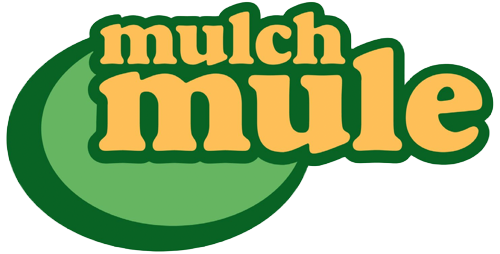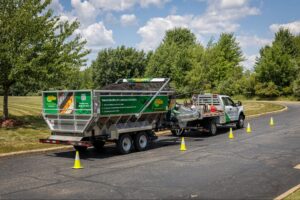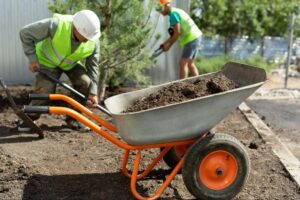Sustainable landscaping is no longer just a trend—it’s a vital approach for businesses in today’s environmentally conscious world. With growing concerns about climate change, resource management, and rising operational costs, landscaping professionals are seeking innovative ways to reduce environmental impact while maintaining high levels of productivity. From property managers to lawn care companies, the shift toward more responsible practices presents an opportunity to deliver better results and enhance profitability. In fact, companies looking for a profitable landscaping approach can boost business growth while also reducing their ecological footprint.
This guide explores how sustainable landscaping can transform your operations. By adopting eco-friendly methods, integrating modern equipment like the Mulch Mule trailer, and implementing proven strategies for operational efficiency in landscaping, businesses can align goals of profitability, safety, and environmental stewardship. Whether you oversee sprawling golf courses or smaller property maintenance projects, blending these approaches can elevate your business operations and sharpen your competitive edge. Meanwhile, advancements in modern tools offer new ways to enhance performance year-round.
Understanding Sustainable Landscaping
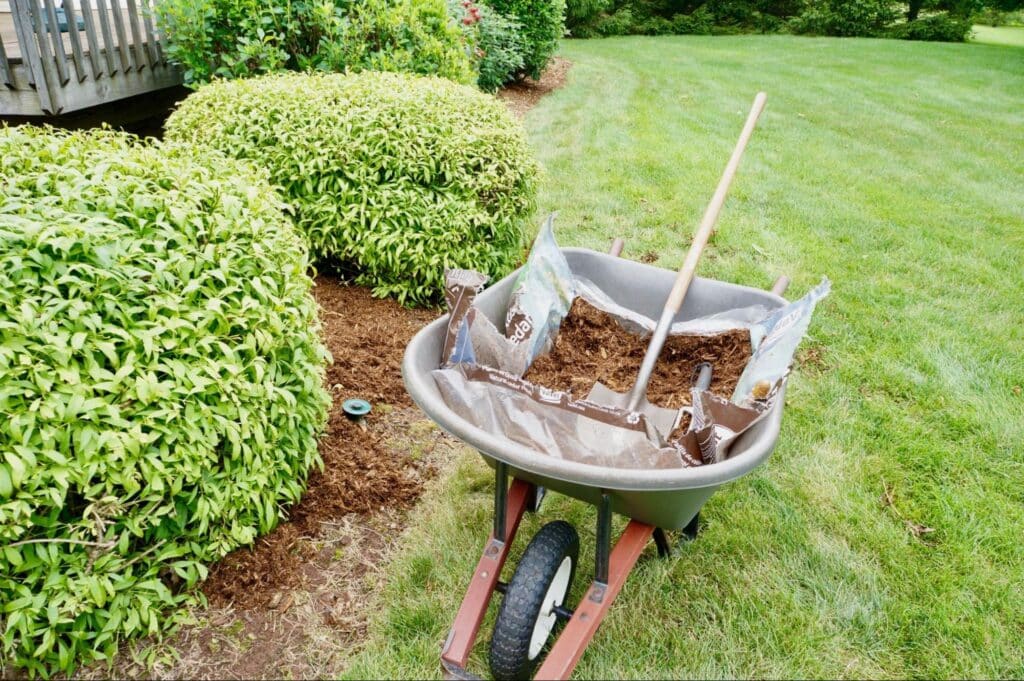
Sustainable landscaping centers on creating and maintaining outdoor areas in ways that safeguard long-term ecological health while optimizing natural resources. Beyond aesthetic beauty, its aim is to integrate design, construction, and maintenance with conservation principles. Such an approach—similar to ideas found in landscape design and conservation—helps ensure that vibrant landscapes develop in harmony with flourishing ecosystems.
Embracing sustainable landscaping strategies offers several benefits for professional landscapers. It meets the rising demand for environmentally friendly services, helping you attract and retain clients who prioritize responsible resource use. Additionally, sustainable practices can reduce operating costs by minimizing waste, conserving water, and cutting down on chemical inputs. It also improves broader environmental health by protecting local biodiversity, soil integrity, and water resources—echoing the eco-friendly practices that today’s clients increasingly seek.
Why Sustainability Matters in Landscaping
Sustainability has become a fundamental consideration for businesses wanting to excel in a competitive market. Clients increasingly expect services that address their environmental concerns—favoring operations that reduce waste and lower resource consumption. Consequently, landscaping companies that incorporate these practices can present themselves as responsive, forward-looking partners who deliver substantial value.
On a larger scale, adopting sustainable strategies can align your company with evolving regulations and incentive programs designed to encourage resource efficiency. By focusing on stable, cost-effective methods—like using efficient equipment—you can develop solutions that benefit both your bottom line and the environment.
The Role of Equipment in Sustainable Landscaping
The machinery and tools you use shape not only your efficiency but also your environmental impact. Traditional equipment, though serviceable, often consumes excessive fuel, produces higher emissions, and requires significant manual labor—leading to inflated costs and potential harm to local ecosystems. In contrast, modern equipment is transforming the industry by automating tasks, saving labor hours, and streamlining workflows.
Eco-Friendly Tools: A Greener Alternative
Technological advancements are enabling landscaping professionals to reduce the burden of manual labor. Features like the live floor system for automatic unloading help shorten project timelines and ease physical strain on crews. Specialized equipment also mitigates dust and debris issues, helping maintain cleaner job sites and healthier plants. By automating burdensome tasks, businesses can reallocate labor to more skilled work, ultimately boosting efficiency and minimizing worker fatigue.
Elevating Safety and Profitability
Today’s equipment designs prioritize safety with improved ergonomics, better shielding, and more intuitive controls. These enhancements help reduce job site incidents, which can lower insurance and workers’ compensation costs. For instance, investments in specialized gear that promotes improved safety features also help employees focus on delivering quality results rather than worrying about injury risks. The synergy between efficiency and safety translates into higher productivity and better profit margins.
Combining Innovation with Efficiency
Upgrading to modern equipment isn’t just about performance—it also signals your commitment to future-oriented, efficient services. Clients increasingly recognize and reward companies that leverage new technology to minimize environmental impact. Whether it’s quickly hauling mulch or precisely spreading aggregates, these innovations reduce labor, shorten job times, and enhance reliability. By focusing on cutting-edge machinery, you stay on track to meet evolving customer and regulatory demands.
Challenges in Traditional Landscaping Practices
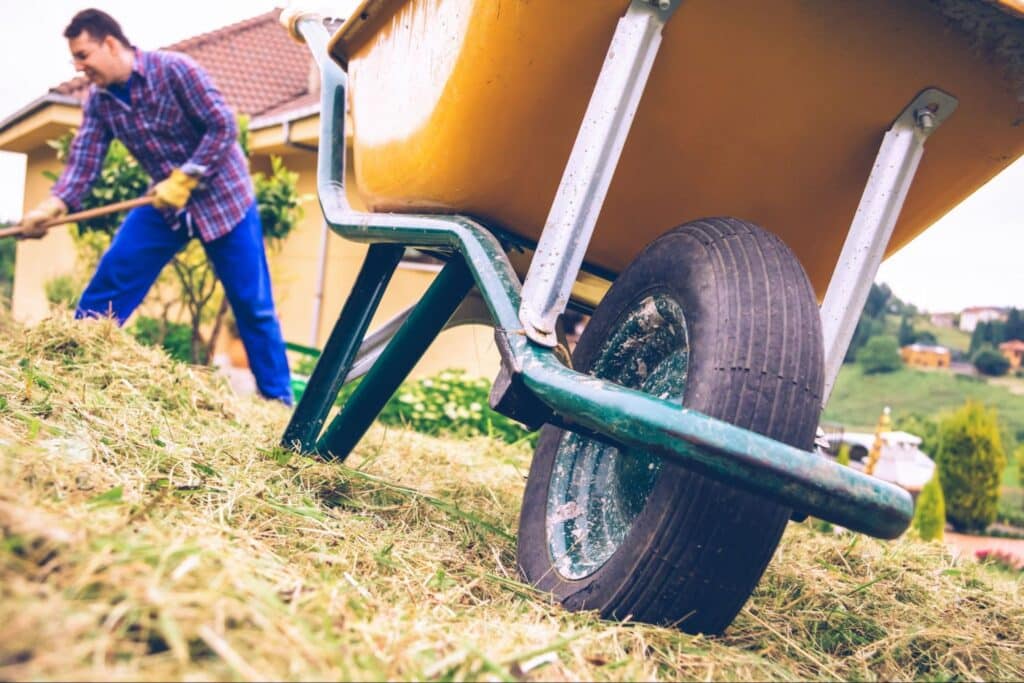
While conventional landscaping methods can produce aesthetically pleasing results, they frequently come with hidden inefficiencies and potential environmental drawbacks. Overcoming these issues is crucial for businesses that aim to remain competitive in a market focused on responsible, cost-effective solutions.
Labor-Intensive Processes
Tasks such as raking, shoveling, and mulch distribution often depend on extensive manual labor. Although these practices can get the job done, they place substantial physical demands on workers and extend completion times. High-intensity labor can lead to elevated turnover rates, fatigue, or injuries, further driving up costs related to employee health and recruitment.
Environmental Downsides of Conventional Tools
Older machines sometimes operate with limited fuel efficiency and minimal emission controls, making them more harmful to the environment. They can also disturb plant life with dust and potentially degrade soil conditions. In an era of heightened ecological awareness, customers and governing bodies expect businesses to reduce their impact. Sticking to old, polluting equipment can put you at a disadvantage.
Wasted Materials and Time
Inefficient materials handling can result in excess mulch, leftover debris, or wasted stone. Repeated manual trips and disorganized workflows lengthen project timelines, limit the number of clients you can serve, and generate needless waste. Implementing proactive strategies and timely maintenance tips helps streamline everyday operations, reducing expenses and improving customer satisfaction.
Sustainable Innovations with the Mulch Mule
One notable innovation revolutionizing material handling is the Mulch Mule. Featuring a 15-cubic-yard aluminum hopper and a mechanized discharge system, it cuts down on labor-intensive tasks like shoveling, manual unloading, and repeated wheelbarrow trips. Airborne dust and debris also lessen when transmission steps are minimized. You can also watch the Mulch Mule video demonstrations to see this trailer in action and learn how it transforms job sites.
Reducing Labor Dependence and Fuel Consumption
By automating bulk material unloading, the Mulch Mule decreases both manual labor needs and time spent on repetitive tasks. Crews can focus more on specialized duties, raising team efficiency. Fewer trips to transport mulch or aggregate additionally reduce fuel consumption, which translates into cost savings and a smaller carbon footprint.
Efficiency and Versatility
Landscapers often face seasonal shifts in work requirements, and the Mulch Mule is designed to adapt. Whether spreading mulch in spring, helping with leaf collection in autumn, or hauling materials any other time of year, it fits a wide range of applications. This flexibility means you can minimize reliance on multiple specialized tools—a benefit mirrored in many sustainable lawn care approaches—and reduce overall maintenance costs.
Productivity and Operational Benefits of the Mulch Mule
The Mulch Mule’s 15-cubic-yard capacity, robust design, and automated functions signify a shift from purely manual handling to streamlined, technology-based processes. Its flexible design supports efficient operations throughout multiple seasons and projects, enabling landscaping companies to take on more clients without sacrificing quality or safety.
Whether you’re loading mulch or hauling off-site debris, this trailer’s rapid discharge and reduced need for manual labor pave the way for quicker turnarounds. For those aiming to align operational performance with sustainability and safer working conditions, the Mulch Mule represents an innovative solution to modern landscaping challenges.
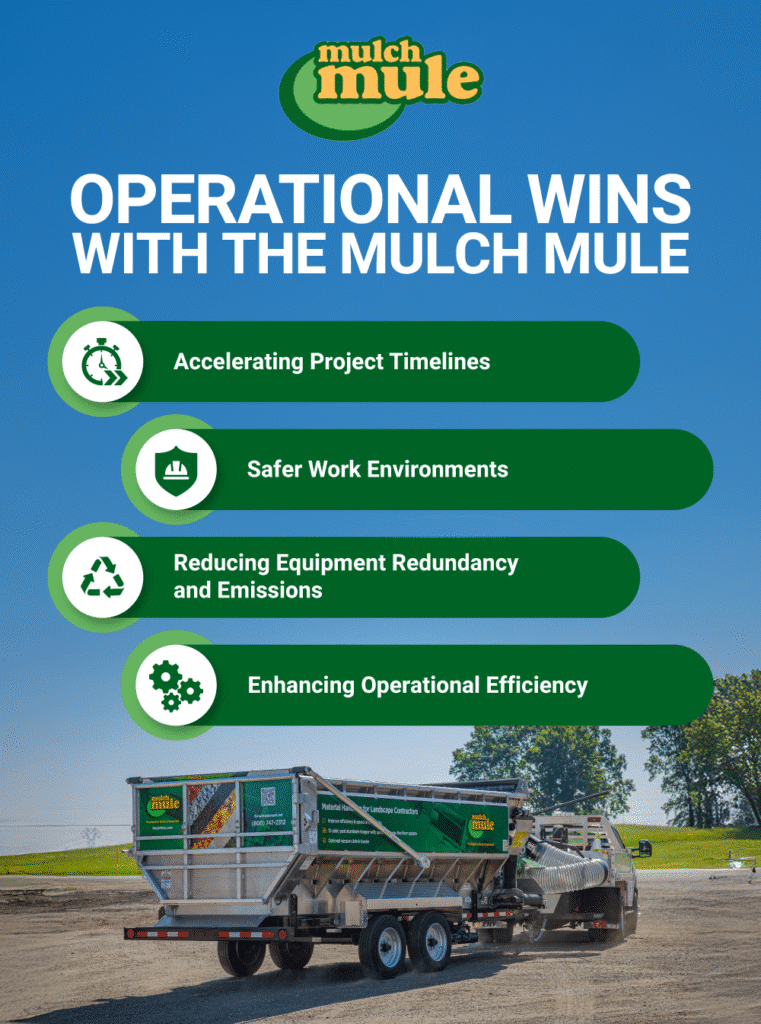
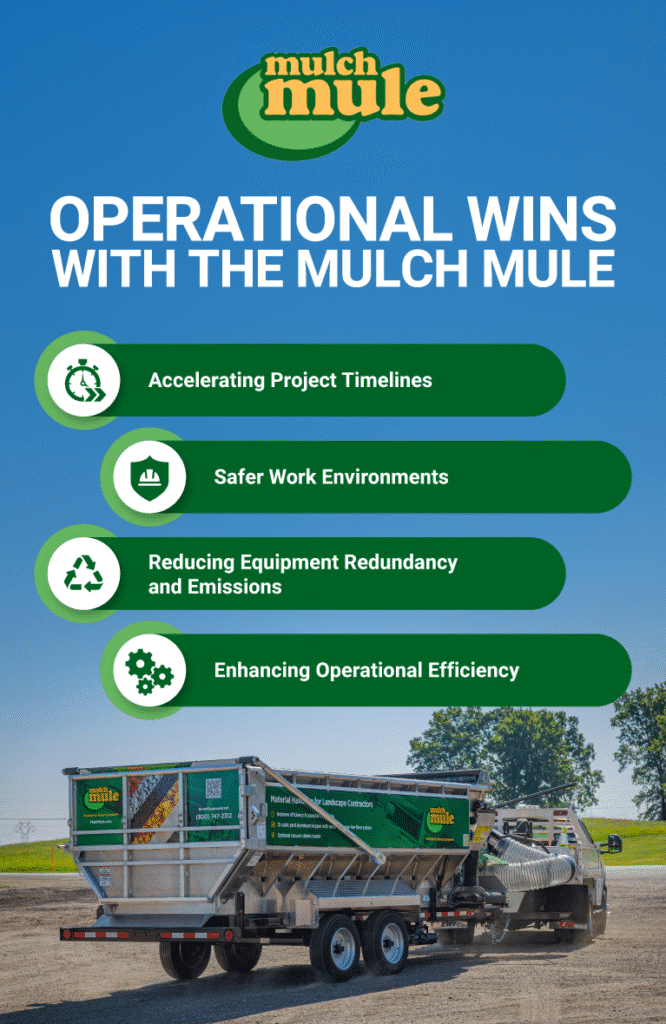
Accelerating Project Timelines
The trailer’s live floor mechanism can quickly move material, minimizing downtime during loading and unloading. As a result, project timelines shrink, making it possible to complete more jobs within a given season. Such accelerated performance enhances customer satisfaction, as tasks are finished both on schedule and to a high standard.
Promoting Safer Work Environments
High-volume manual labor often leads to fatigue and heightened risk of injury. The Mulch Mule’s automated discharge process means fewer shovels, wheelbarrows, and back-breaking motions. Fewer injuries equate to fewer insurance claims, better employee morale, and continuity of service—essential factors in the fast-paced landscaping sector.
Reducing Equipment Redundancy and Emissions
Some companies rely on multiple machines to handle different tasks, from distributing mulch to clearing leftover debris. The Mulch Mule condenses these roles into one piece of equipment, cutting down on the overall number of engines running at a job site. Fewer machines reduce operating costs as well as emissions, promoting a cleaner and more efficient workplace.
Enhancing Operational Efficiency
The Mulch Mule’s advanced design—including its live floor technology—is intended to streamline material handling and reduce the need for repetitive manual tasks. While equipment performance can vary based on usage and maintenance, incorporating modern systems like this may help decrease downtime and support more efficient job site operations over time.
To avoid the common stumbling blocks in traditional landscaping, the Mulch Mule enables faster project completion, lower labor costs, and more streamlined operations.
Watch this video below to learn how the Mulch Mule gets what you need where you need it with speed and efficiency. This innovative landscaping machine transports and distributes soil, mulch, leaves, debris, stone and aggregate to save you time and money.
Potential Drawbacks to Consider
While the Mulch Mule provides considerable advantages, it’s important to incorporate a balanced view of potential concerns:
- Upfront Purchase Cost: The initial investment might be higher than conventional trailers or tools, meaning companies should evaluate their budgets and expected return on investment, especially smaller operations.
- Storage and Maintenance: Because of its mechanized features and larger capacity, businesses may need adequate storage facilities and a consistent maintenance routine to keep the equipment in peak condition.
- Training Requirements: Employees might require brief, specialized training to fully utilize the Mulch Mule’s automated functionalities, ensuring both safety and efficiency on the job site.
Recognizing these factors in advance helps landscapers maximize the benefits of adopting innovative solutions while minimizing disruptions.
Practical Sustainable Landscaping Practices
In addition to employing advanced equipment, incorporating eco-conscious strategies is vital for cultivating truly sustainable landscaping operations. Thoughtful planning and efficient resource usage can help reduce waste and optimize project execution.
Plan Effectively to Minimize Waste
Start each project by accurately estimating the necessary amounts of mulch, soil, stone, or fertilizers. Ordering only what you need avoids on-site clutter and reduces the likelihood of throwaway materials. You can also recycle organic waste—like shredded branches or leaves—by turning it into compost, simultaneously eliminating disposal costs and nourishing soil.
Choose Native Plants and Efficient Irrigation Systems
Selecting local, well-adapted plant species can lower your reliance on fertilizers, pest control, and watering, thereby cutting operating costs. Pairing these with water-efficient systems such as drip irrigation reduces usage and helps plants thrive in their natural habitat. For more details, consult resources on eco-friendly lawn management which focus on biodiversity and minimal environmental impact.
Maintain Equipment for Peak Performance
Regular upkeep of machinery ensures lower emissions, consistent performance, and fewer disruptions on the job site. Simple measures like checking fluid levels, lubricating moving parts, and scheduling thorough inspections can help extend equipment life. A well-maintained system conserves resources and keeps projects moving smoothly.
Why Efficient Equipment Represents the Future of Landscaping
As environmental awareness grows, clients and regulatory bodies are recognizing the value of modern, efficient machinery. Businesses that fail to adapt may see their reputation decline with customers seeking fresher, sustainable alternatives. Investing in advanced equipment positions you to handle evolving consumer demands, stricter regulations, and a market increasingly shaped by eco-conscious decision-making.
By incorporating tools like the Mulch Mule, you enhance your competitiveness. Automated workflows, reduced labor, and safer job sites translate into higher profit margins and solidify your reputation as a forward-thinking player in the landscaping arena.
The Mulch Mule: A Foundation for Enhanced Landscaping Operations
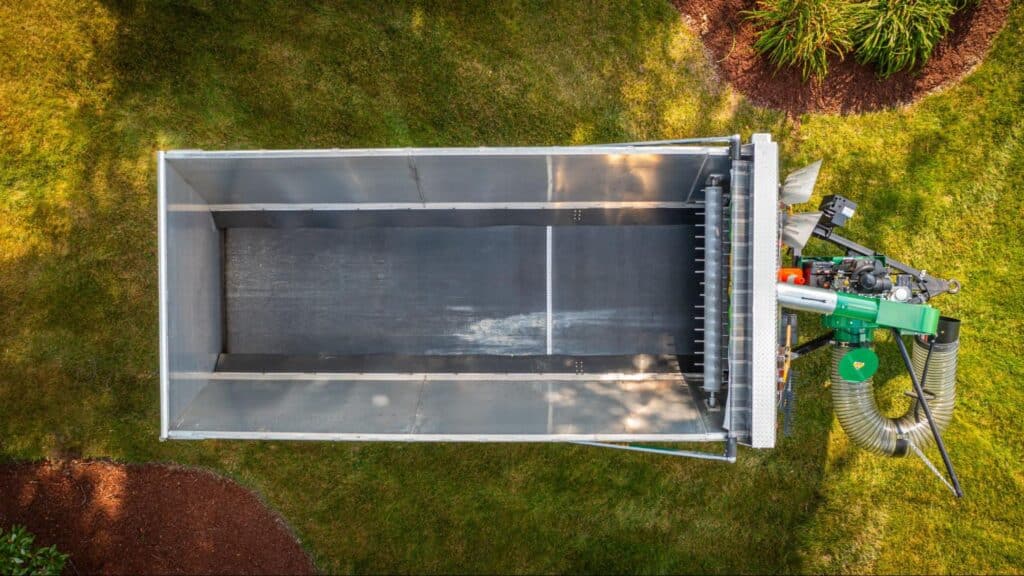
Sustainable landscaping has evolved into a critical advancement for businesses that strive to grow responsibly in an efficiency-driven sector. By introducing eco-friendly strategies, leveraging modern equipment like the Mulch Mule trailer, and making mindful operational decisions, you can achieve tangible gains in productivity while minimizing physical labor. These strides benefit not only your bottom line but also your workforce and the broader environment.
When you invest in Mulch Mule, you gain more than just access to a piece of material handling equipment. Alongside its advanced features, Mulch Mule offers comprehensive parts and warranty services so you can keep your investment running optimally. Local Mulch Mule Ambassador Program resources can also connect you with hands-on demonstrations to experience its benefits firsthand.
Scheduling a demonstration provides an in-depth look at how the Mulch Mule shortens job timelines and reduces labor. By integrating these systems into your business, you can expand your service portfolio, increase profitability, and raise safety standards—all hallmarks of succeeding in a market that values efficiency.
Now is the time to modernize your operations with tools that blend responsible resource management and high-level performance. Want to learn more about how Mulch Mule can transform your services? Get a quote today or schedule a live demonstration. Invest in the future of efficient landscaping—and propel your business to new heights.
